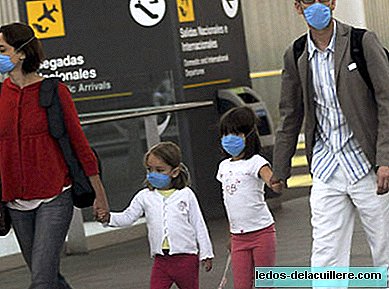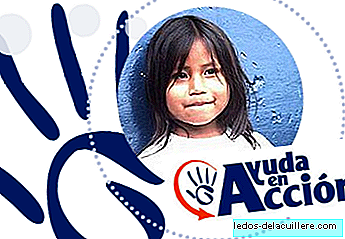
News, newspapers and in general all the news media are full of news and information about the swine flu virus.
Images of people with masks, many of them inefficient and WHO data gradually increasing the level of alertness is leading the population to doubt the danger of contagion themselves and children becoming infected.
Several mothers have consulted these days in the center where I work on this possibility and, although children, elderly and pregnant women are part of the most fragile group in this regard, the situation, today, is that The danger of contagion in Spain is negligible.
13 confirmed cases in Spain
The most superstitious will think that why not 12 or 14, instead of 13 and the most pessimistic see that there are more and more people and that things are increasing.
The truth is that there are 13 confirmed cases but there are still 101 people suspected of suffering from the disease.
Of the confirmed cases, only one has been infected here in Spain and it's about the boyfriend of a girl who was in Mexico.
That is, the people who can infect our little ones are all those with flu symptoms that have just arrived from Mexico or the US (at most 10-12 days ago). I imagine that these relatives and friends, knowing the danger they entail, will not approach any baby until their disease is ruled out or solved.
What type of flu is it and how is it spread?
It is a type A influenza virus, cataloged as the H1N1 strain. It contains DNA from avian, swine and human flu viruses and thanks to that it has spread from person to person.
As the rest of the flu virus is spread by sneezing, coughing or when people pick up the virus in their hands. That is why people who are going to touch babies and children should always (even when we don't talk about this flu) handwashing before doing so.
The virus probably comes from pigs, but both the Mexican government and the World Health Organization (WHO) have ruled out the risk of infection from eating pork.
Is the situation so serious?
WHO raised the threat level of the virus to Phase 5 (out of 6) by declaring the flu "a public health emergency of international concern". This type of flu imposes the greatest risk of a large-scale pandemic since in 2003 the bird flu produced 257 deaths of the 421 infected people in 15 countries.
However, it is still unclear whether the virus could become a pandemic.
What is that of Phase 5?
The World Health Organization (WHO) uses six phases of pandemic alert as a system of information to the world about the severity of a threat at the health level that in turn serves to alert different countries of the need to carry out various actions for the Control of possible disease.
The phases are as follows:
INTER-PANDEMIC PHASE: New viruses in animals, without human cases.
- Phase 1: Low risk of human cases.
- Phase 2: Increased risk of human cases.
PANDEMIC ALERT: New virus strains cause human cases.
- Phase 3: None or very limited human to human transmission.
- Phase 4: Increasing evidence of human to human transmission.
- Phase 5: Evidence of significant human to human transmission.
PANDEMIC:
- Phase 6: Efficient and sustained human to human transmission.
What symptoms can it give
Swine flu has the same symptoms as usual flu: sudden fever, muscle aches, sore throat and dry cough, but can cause more severe vomiting and diarrhea.
Children and pregnant women are a population group (like the elderly) especially fragile against any influenza virus. In this case, taking into account that the virus seems more serious, preventive measures should be taken more into account if possible.
In theory, being a strain of influenza related to those we have had in mind for several years, the population has a certain immunity and should not cause a pandemic, however it has taken genetic elements from animals and this could be enough to impose a threat of pandemic. As I commented above, it is not yet known to what extent it can happen.
We are prepared?
Spain has been the first country in the European Union to activate the preparedness and response plan before a situation of this nature informing all health centers, airports and citizens to prevent the spread.
Those affected are being treated and evolve favorably so that the flu, for the moment, is controlled.
What can be done
At the moment there is not much to do. Basically prevent those relatives, acquaintances and friends who have been in Mexico or the US in the last 10 days that have symptoms from approaching us and our children and recommend, if they have not already done so, to go to a health center or call to the telephone number that each autonomous community establishes for it or to the emergency telephones (061 or 112).
For our part, wash our hands before taking and touching them (if possible), in case we have been in contact with this or other viruses (recommendation that is part of the usual when someone has a baby).












